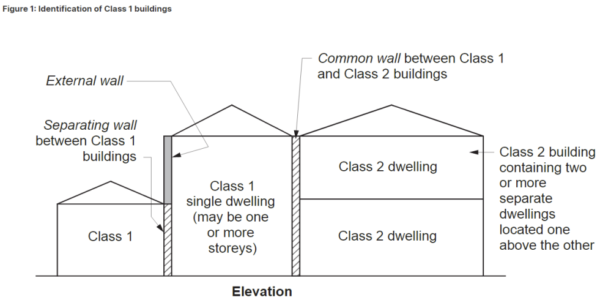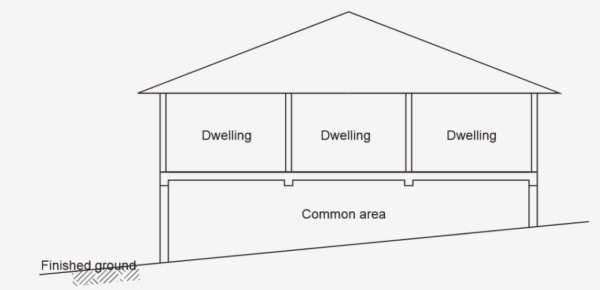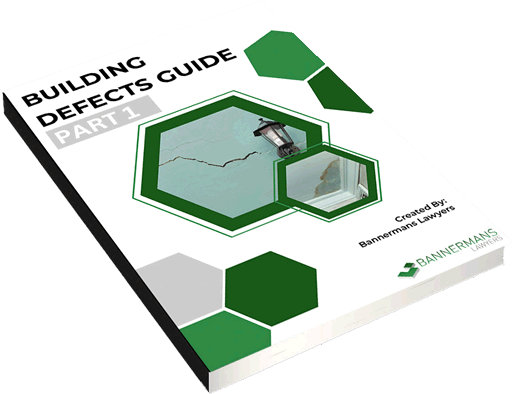Click here to call us +61 2 9929 0226
Posted 11 October 2022
Category: Strata, Building Defects, eBooks
Answer: The answer comes from Volume 1 of Part A6 of the National Construction Code (NCC) 2019:
“A6.1 Class 1 buildings
A Class 1 building includes one or more of the following sub-classifications:
Limitation 1:
For A6.1, a Class 1 building cannot be located above or below another dwelling or another Class of building, other than a private garage.”
The below figure provided in the NCC assists in comparing the two classes:


© Commonwealth of Australia and the States and Territories 2020, published by the Australian Building Codes Board.
“A6.2 Class 2 buildings
“Sole-occupancy unit means a room or other part of a building for occupation by one or joint owner, lessee, tenant, or other occupier to the exclusion of any other owner, lessee, tenant, or other occupier and includes—
Generally strata schemes will be class 2, however not always. Where, for instance, the strata schemes is comprised of townhouses, taking the above example, a townhouse would typically be class 1 as it is one dwelling located within one building, to be contrasted with class two, which contains two or more dwellings within the one building.
However, where there is any common property area below, they are Class 2, regardless of whether the common property area is a storey or not. See figure below:


© Commonwealth of Australia and the States and Territories 2020, published by the Australian Building Codes Board.
The definitions for each of the building classes can be found in the National Construction Code Volume 1 which is found at https://ncc.abcb.gov.au.
***The information contained in this article is general information only and not legal advice. The currency, accuracy and completeness of this article (and its contents) should be checked by obtaining independent legal advice before you take any action or otherwise rely upon its contents in any way.

To access more FAQ'S on Building Defects fill in the below form to download our Bannermans Building Defects Guide – Part 1 for free.